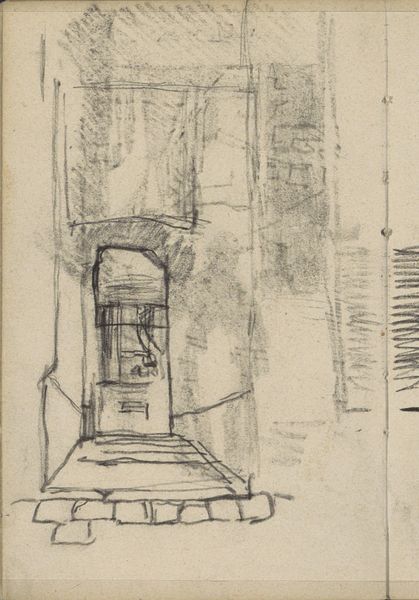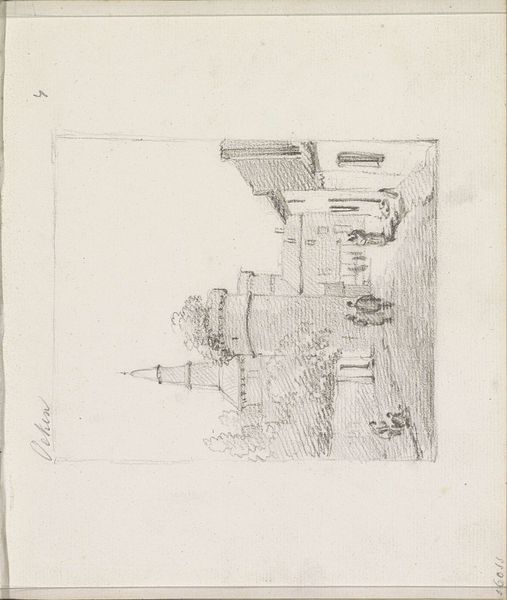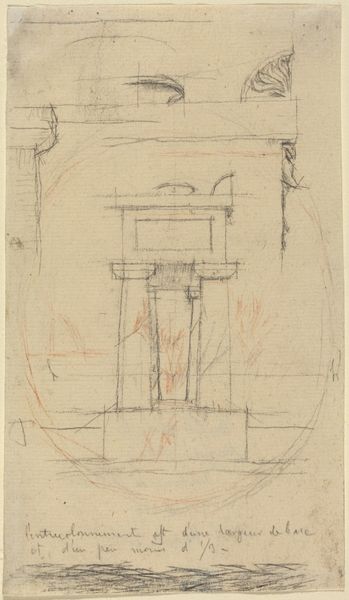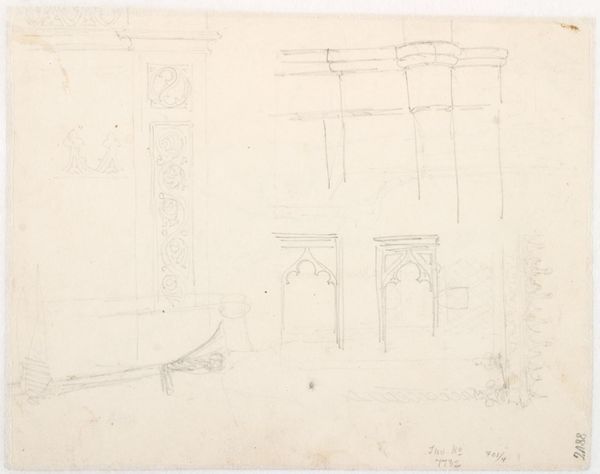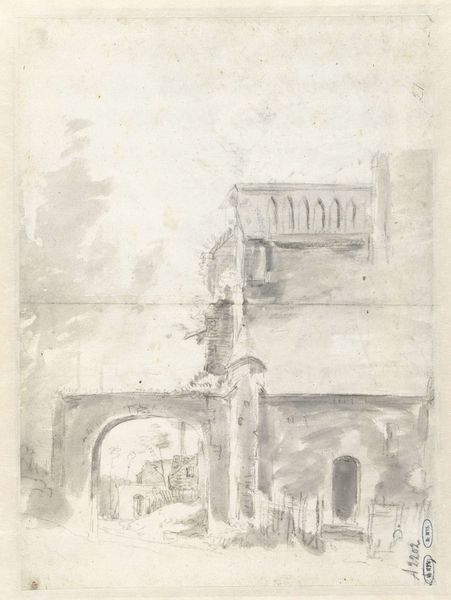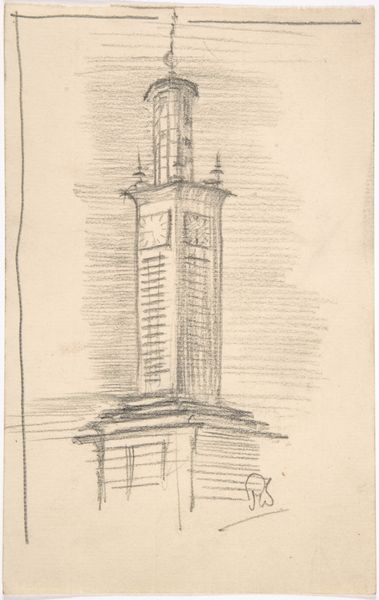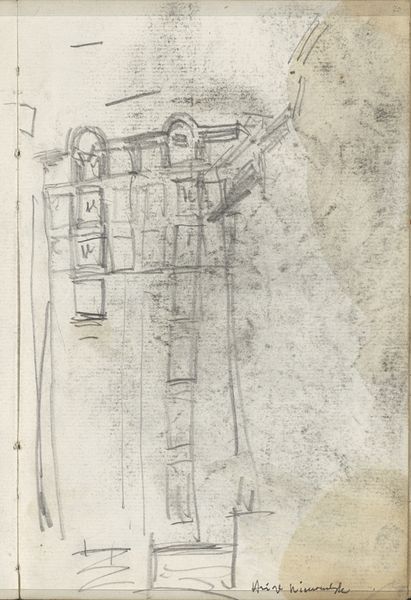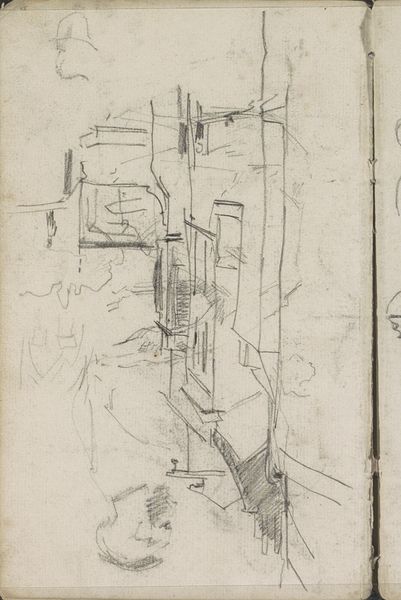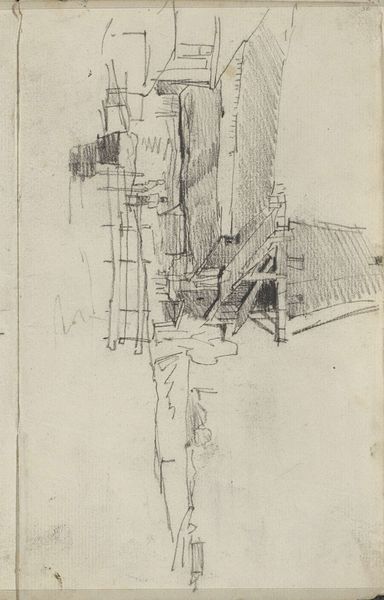
drawing, pencil
#
drawing
#
landscape
#
etching
#
ancient-mediterranean
#
pencil
#
cityscape
Dimensions: 257 mm (height) x 202 mm (width) (bladmaal)
Curator: This is "Søjle foran Apollotemplet i Pompejii" by L.A. Ring, made between 1893 and 1895. It's currently held at the SMK, Statens Museum for Kunst. It seems to be a pencil and perhaps etching study, depicting a column in the ruins of Pompeii. Editor: It's skeletal, isn’t it? A ghost of grandeur. The way the column rises alone against the emptiness. The temple as such seems mostly faded into a shadow of faint, incomplete lines, really focusing our attention on that lone pillar and the implied human absence. Curator: Absolutely. Ring visited Pompeii in the late 19th century. It became quite popular with northern European artists interested in ancient civilizations. This drawing isn't a simple record; rather, it shows the cultural weight these ruins held. Pompeii was seen as a cautionary tale about hubris and civilization’s fragility. Editor: Right, there's a tension there. The meticulous detail of the column's capital, set against the vagueness of everything else… it’s almost a challenge to ideas of power and permanence, the colonial fascination with antiquity confronted by temporal decay. It suggests we examine what societies choose to memorialize, and for whom. Curator: That's insightful. Notice how the sharp lines used in the foreground dissolve as we look further in. The temple, in its diminished presence, could symbolize the limited accessibility to and flawed perception of history itself. Editor: It definitely reframes the experience of witnessing such artifacts. This lone, looming architectural structure evokes questions about the cost of empire and natural disaster. One has to ask: who gets to build temples and how did it affect people outside of power? Curator: Indeed. L.A. Ring manages to render the site's atmosphere through line work. It prompts the viewer to not only recall the lost civilization but also perhaps to meditate on what truly lasts and what fades in time. Editor: Yes. Ring seems to suggest that by only offering traces, we can never truly grasp any one historical interpretation completely. The social structures that built temples – who paid, who labored – are all faded. I suppose it is up to us to keep asking about that.
Comments
No comments
Be the first to comment and join the conversation on the ultimate creative platform.
